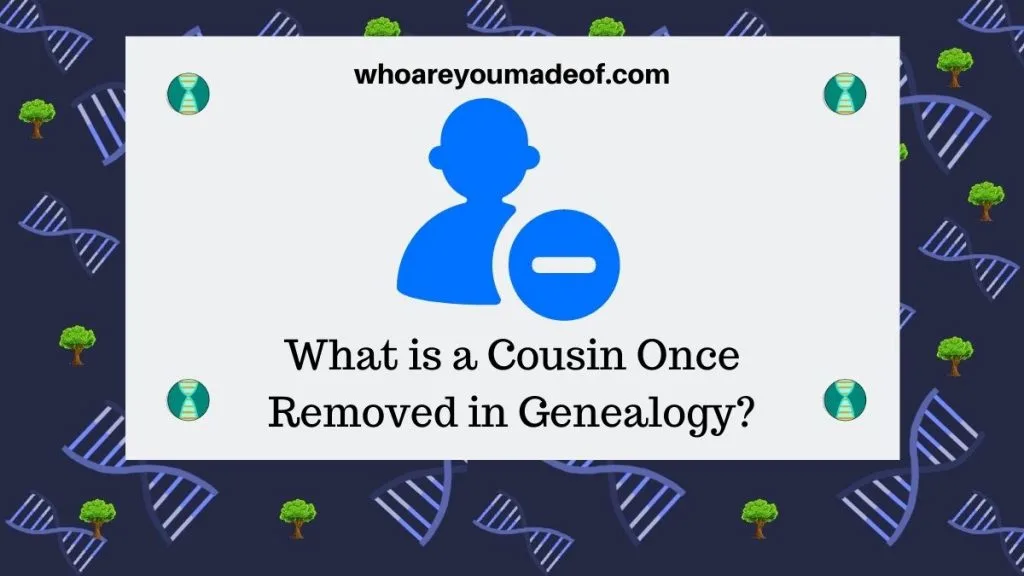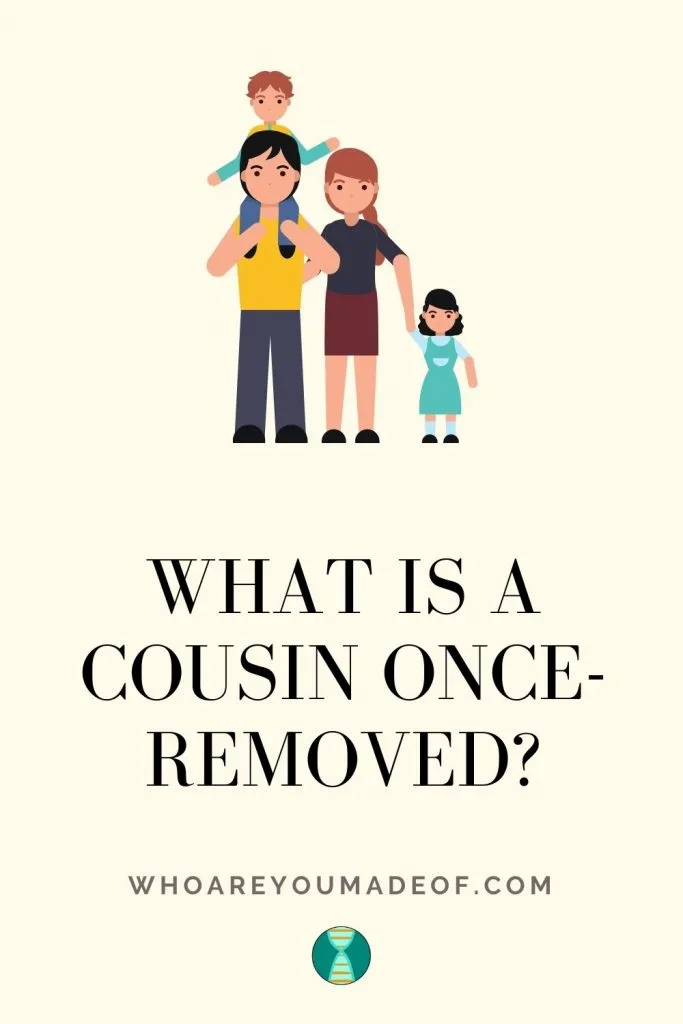In this post, you will learn the meaning of a cousin once-removed in genealogy, whether it's a first, second, third cousin once-removed. You will be able to use the information that you learn in this article to figure out your degree of cousin-ness to even more distant cousins, too.
Cousin relationships are complicated! First cousins, second cousins and third cousins are hard enough to keep track of, and it's even more confusing when people starting using words like "cousin once-removed".
This post is written in a manner designed to simplify the complicated way that English speaking countries describe the exact genealogical relationship between two cousins. Every culture has their own way to describe these relationships, of course.
People from cultures that don't describe family relationships using words like "third cousin" and "once-removed" or even "three times-removed" sometimes often find this system of defining blood-relatedness odd.

For example, my husband is from a Latin American family where people are just cousins, aunts, and uncles. His eyes seem to glaze over when I try to work out the exact degree of relationship every time we talk about one of his relatives.
What is a cousin once-removed in genealogy?
A cousin once-removed in genealogy is a person who is your cousin, but one generation above you or below you in your family tree. They are either one generation more closely related to your common ancestor, or one generation further removed.
For example, the child of my first cousin is my first cousin once-removed. I am their first cousin once-removed, too, because I am their parent is my first cousin.
In the case of first cousins once-removed, the common ancestor is the grandparent of the first cousins. In the example that I used, I am more closely related to my grandparents than the child of my first cousin, making them once generation further removed from our common ancestor(s).
My children are second cousins to the children of my first cousins. This is because they are the same number of generations away from their common ancestors, which in this case are their great-grandparents.
What kinds of cousin once-removed are there?
There are numerous "cousin once-removed" relationship types, especially when we are referring to our family tree or genealogy work. You can have cousins once-removed who are:
- first cousins once-removed
- second cousins once-removed
- third cousins once-removed
- fourth cousins once-removed
- fifth cousins once-removed
- sixth cousins once-removed
- seventh cousins once-removed
- eight cousins once-removed
- and so on, and so on - you probably get the idea
When trying to visualize your relationship to your relative, you can also think about cousins once-removed from the perspective of your own spot in the family tree. For example:
- Your parent's third cousin is your third cousin once-removed because your parent and their relative share great-great grandparents
- Your parent's fourth cousin is your fourth cousin once-removed because your parent and relative share 3rd great-grandparents
- Your parent's fifth cousin is your fifth cousin once-removed because your parent and their relative share 4th great-grandparents
- Your parent's sixth cousin is your sixth cousin once-removed because your parent and their relative share 5th great-grandparents
- Your parent's seventh cousin is your seventh cousin once-removed because your parent and their relative share 6th great-grandparents
- Your parent's eight cousin is your eight cousin once-removed because your parent and their relative share 7th great-grandparents
Can you have a half-cousin once-removed?
People can even have "half" cousin relationships and be cousins-removed. For example, if you and your first cousin share only one grandparent, then the child of your first cousin is technically your half-first cousin once-removed.
If you and your relative are descended from only one of your great-great grandparents, but they are the child of your third cousin, then they are your half-third cousin once-removed.
Just as in the list I posted above, you can be a "half cousin removed" at any cousin relationship distance. The most important thing to remember about half cousins is that instead of sharing two common ancestors (i.e. a married - or unmarried - couple), you share one.
How to figure out if your cousin is once-removed
In order to calculate whether your cousin is once-removed, you will need to count how many generations you are removed from your share ancestor. If you are both the same number of generations away from the common ancestor, then you are not generations removed and are just "regular" cousins, whether first, second, third, etc.
When you counted, did you find that you are one generation more closely related to your ancestor than your relative? Is the opposite true? If so, then you are cousins once-removed.
If, for example, you find that you are four generations away from your common ancestor, and your relative is five generations removed, then you are cousins-removed.
The person who is most closely related to the common ancestor defines the degree of cousin (i.e. first, second, third). Then, you count the number of generations between you to figure out how many generations-removed you should add.
To read more about "cousins removed", you might be interested in this post:
Why is the exact degree of cousin relationship important?
While most relatives don't base how they feel about each other on their exact degree of relationship, understanding the nature of the genealogical relationship is very important to genealogists.
If you are interested in DNA and genetic relationships, knowledge of how shared DNA is affected by degrees of cousin-ness is extremely important.

Conclusion
I hope that this post has helped you understand the meaning of cousin once-removed, and that you are now able to figure out how you are connected to your cousins from other generations.
If you have any questions about something that you read in this post, or if you would like to post a question about you and your relative so we can work together to figure out your exact cousin relationship, please join us in the discussion below
Thanks for stopping by today!

Bernadette
Sunday 13th of June 2021
My husband’s family wasn’t precise either in identifying relatives.When we first met, he said he had five grandmothers at one time. It turned out that he had the usual two grandmothers, plus three great-grandmothers. Aunts and uncles weren’t distinguished from great-aunts and uncles; first cousins weren’t distinguished from second. I like to be more precise.
Мила
Sunday 6th of December 2020
"First cousin once removed" redirects here. For the documentary film, see First Cousin Once Removed . Commonly " cousin " refers to a " first cousin ", a relative whose most recent common ancestor with the subject is a grandparent.